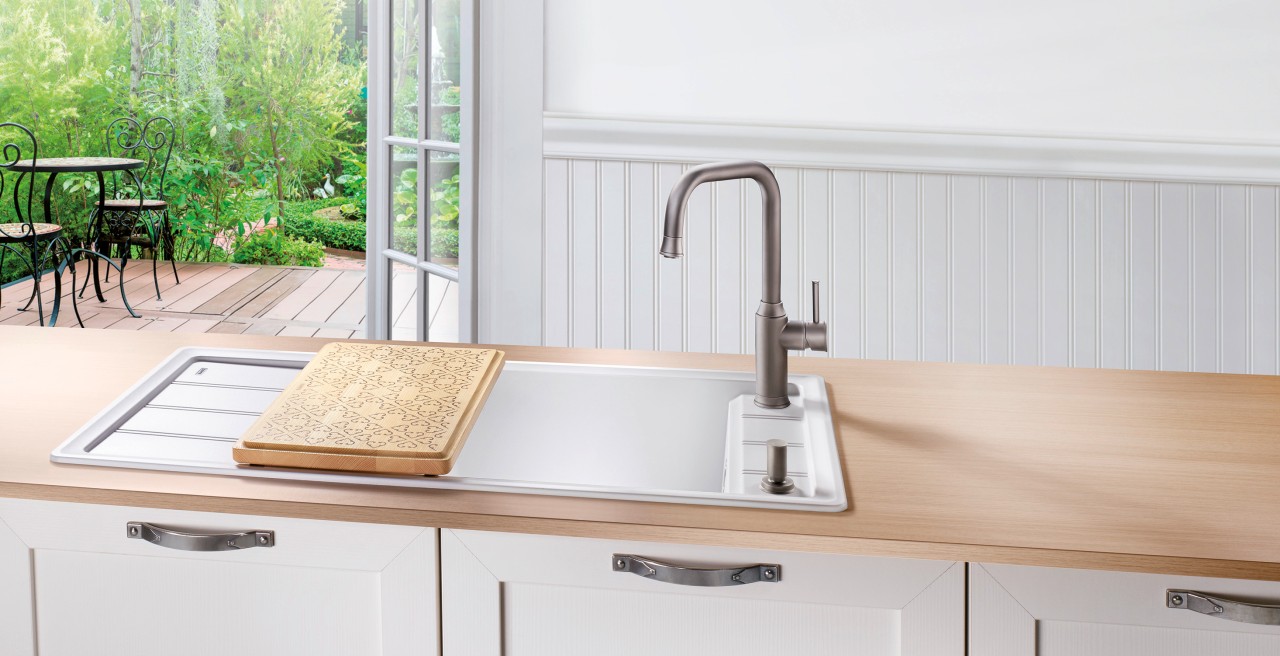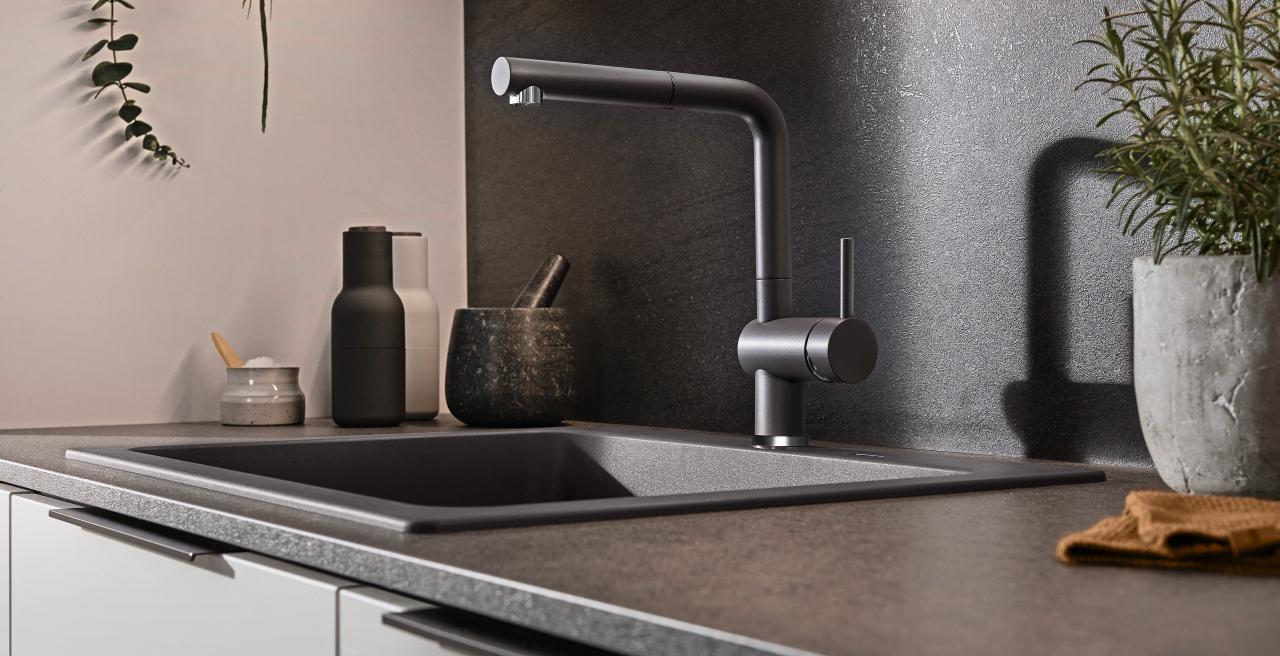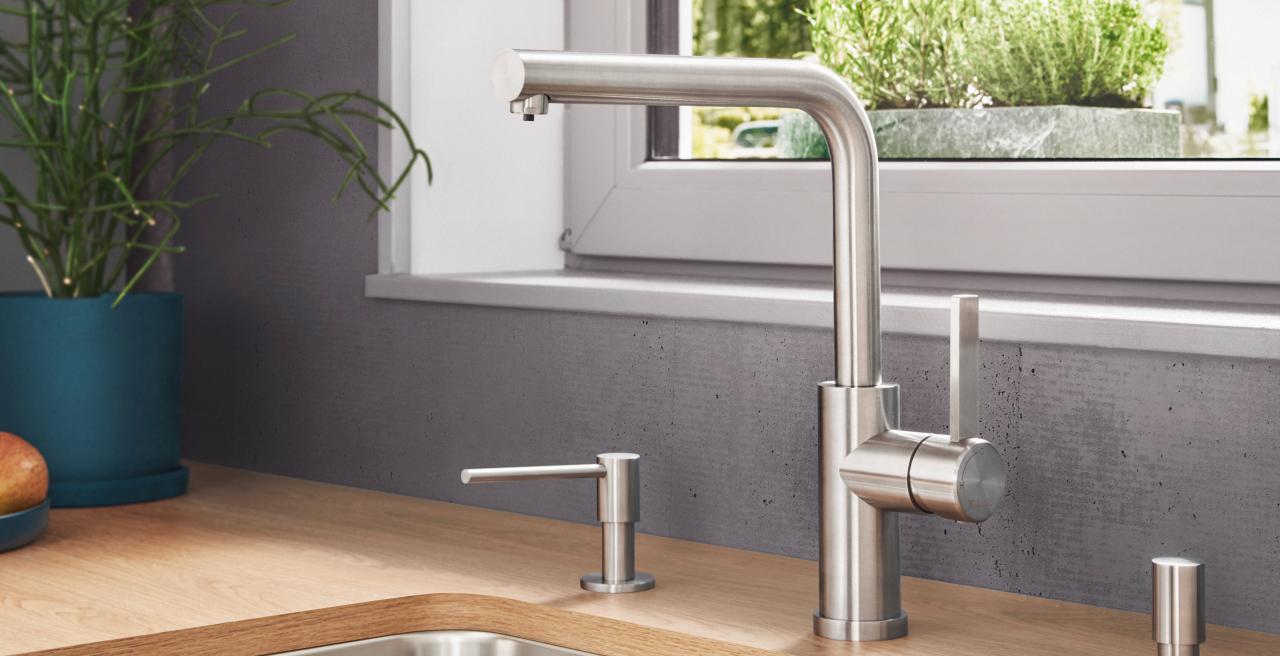1
/
0
Whether modern and cool, playful and nostalgic or understatedly elegant - the interplay between sink and mixer tap plays a decisive role in determining the atmosphere of your kitchen. Get in tune with our practical tips design of your kitchen mixer tap to the sink area and find out what you should pay attention to in terms of installation and later use.
Practical aspects when choosing a sink and tap
When choosing a new kitchen mixer tap for your built-in sink, you should also consider practicality as well as your own taste. For example, if you have a shallow and small sink, you should choose a low mixer tap. In this case, an elegant and high mixer tap may look aesthetically pleasing, but it has the disadvantage that water splashes onto the worktop due to the drop height. You should therefore choose a low kitchen mixer tap for a small sink or a high mixer tap for a deep and large sink.
Sink and mixer tap
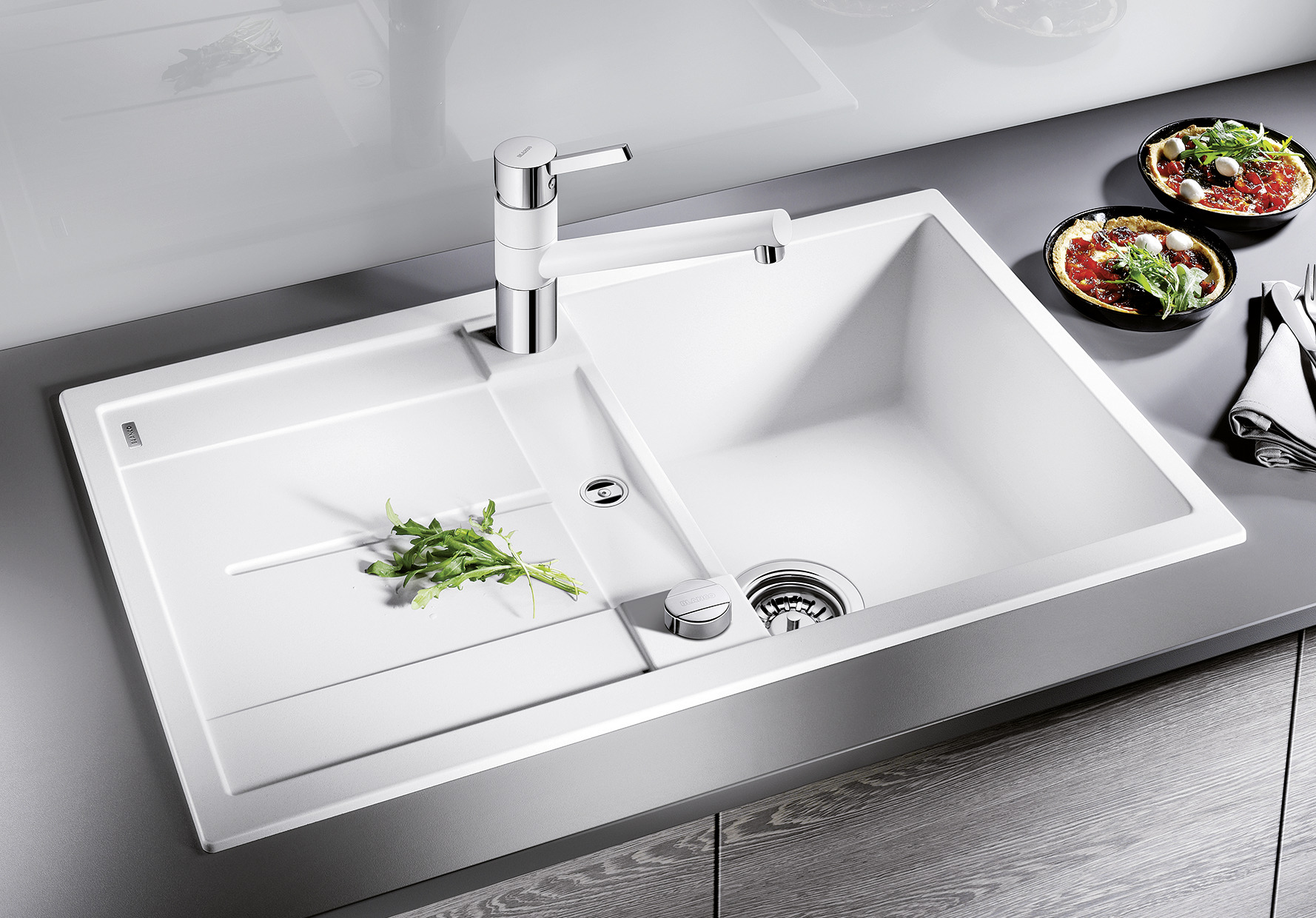

Position the fitting correctly
If you want to integrate a very large sink or even a double sink into your kitchen design, you should choose a pull-out spout for the mixer tap. Increasing the radius of action in this way allows you to easily reach all areas of the sink. The next step is to decide where you want to position the mixer tap. If you regularly use two sinks, it makes sense to install the kitchen mixer tap in the centre between the two sinks, i.e. on the side of the main sink. If you generally use the main bowl, position the mixer tap in the centre of this bowl and use a pull-out drawer to reach all areas of the second sink.
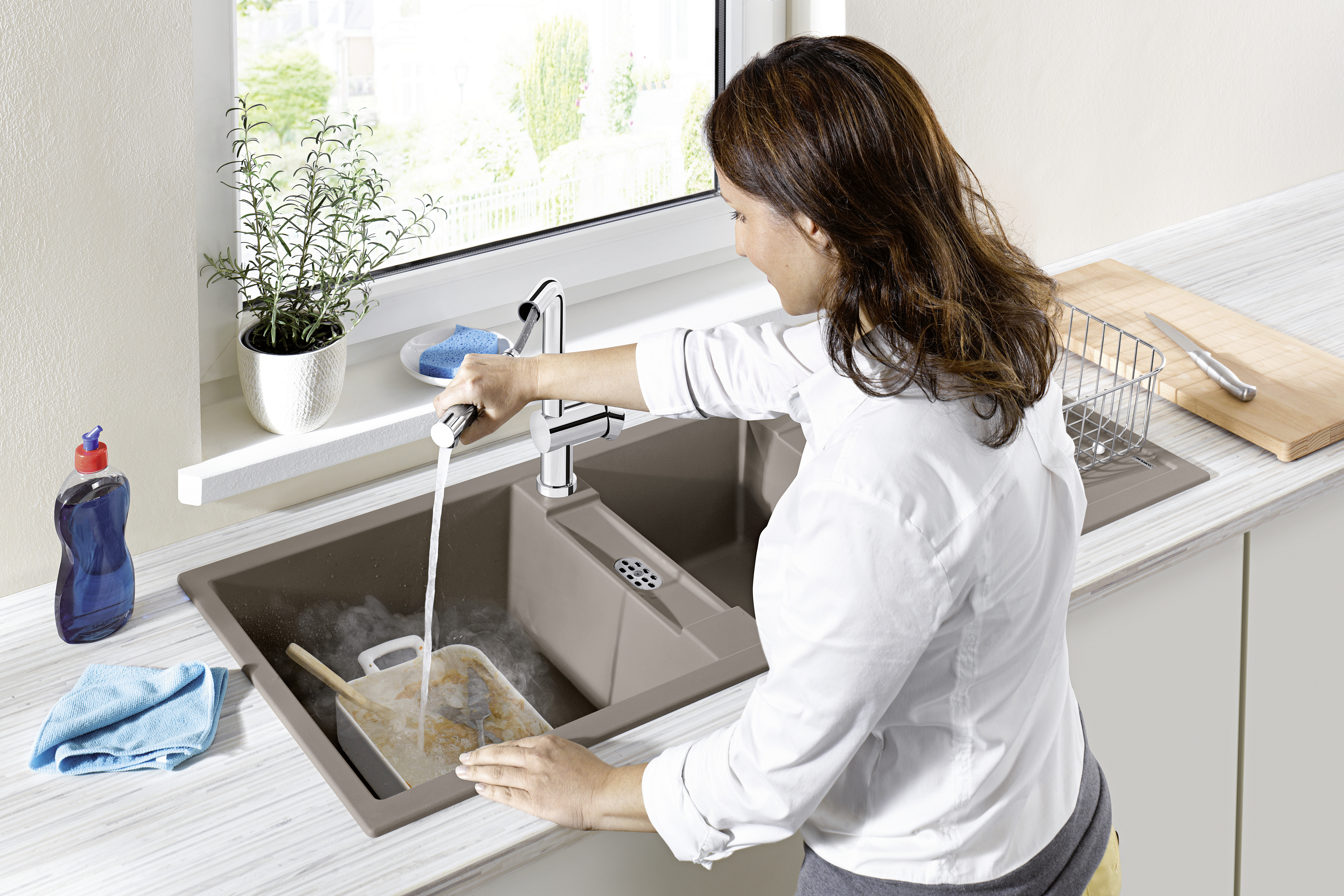
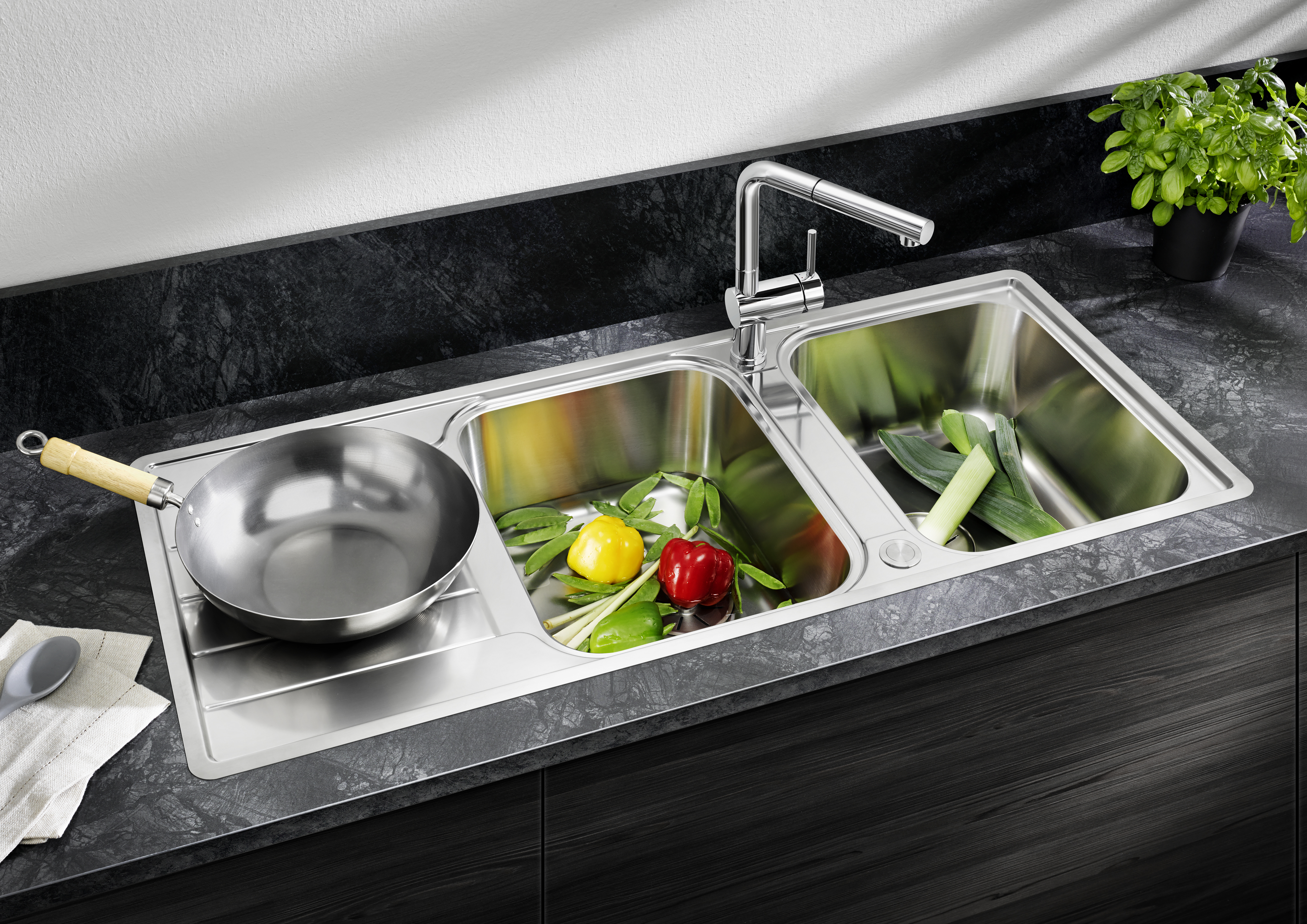
Perfect interplay of sink and tap
When combining the sink and mixer tap, you should also consider the effect you want to create. For a harmonious look, it is best to choose a kitchen mixer tap that matches the built-in sink in terms of colour and material. The Silgranit and ceramic colours from the BLANCO LINUS range, for example, are ideal for this. Here, the taps merge seamlessly with the Silgranit bowls, giving the sink area a modern and balanced character.

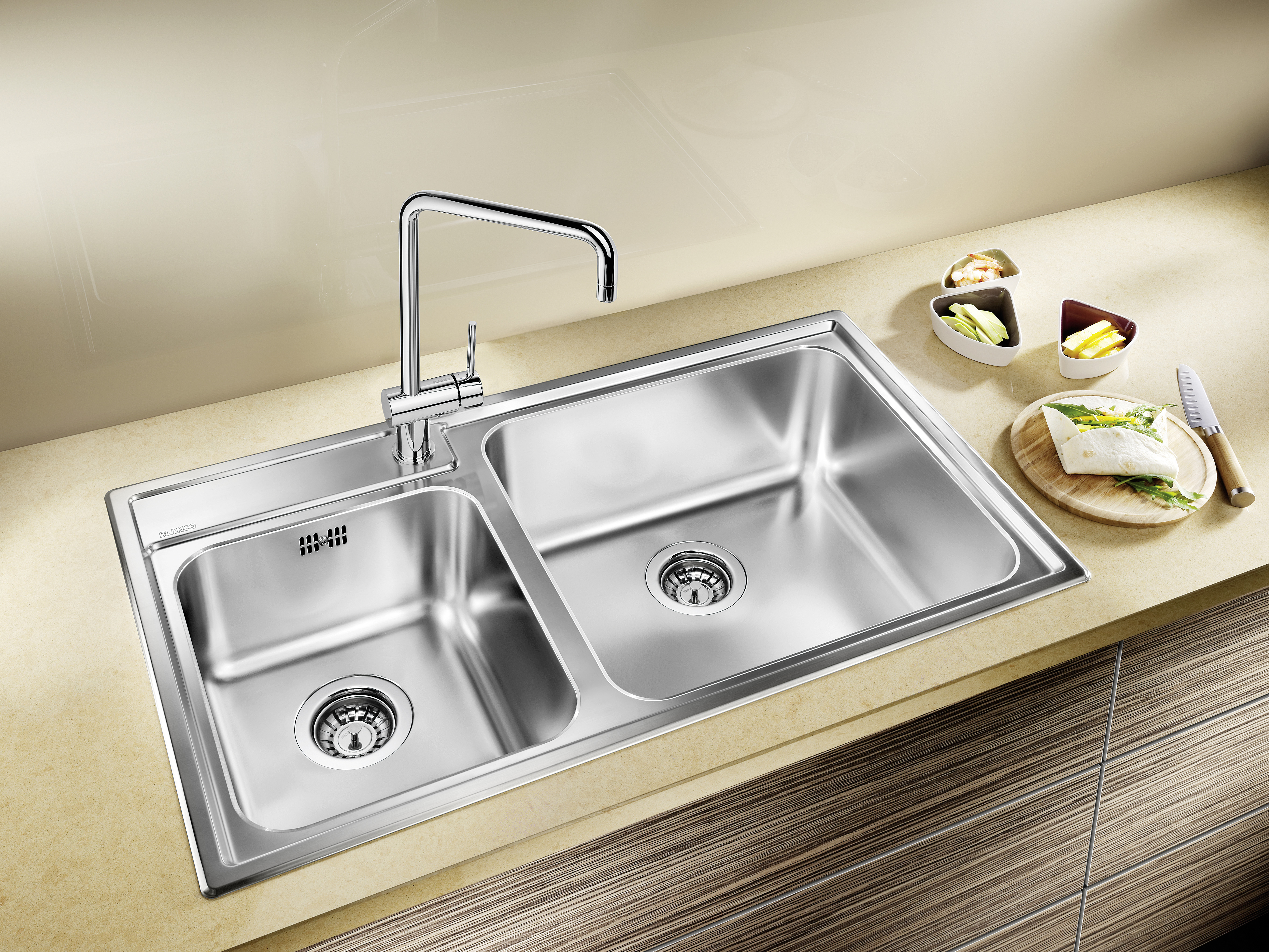
With a very narrow sink rim, it is particularly important that the mixer tap is mounted stably. Stabilising plates, which you should have to hand during installation, help with this. With a BLANCO Silgranit sink, you have to knock out the tap hole yourself.However, this can be done quickly with the right tools.
